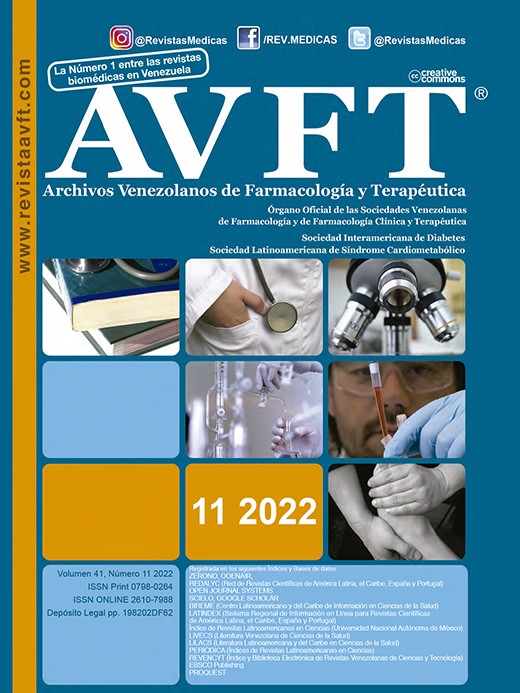Characterization of obstetric patients in the emergency of the Regional Teaching Hospital Ambato
Keywords:
obstetric, maternal morbidity, COVID 19, obstetric emergencies.Abstract
Introduction: The management of the obstetric patient is a matter of great importance, since it is necessary to guarantee the termination of the pregnancy with satisfactory results for the mother and the child, thus avoiding possible maternal or infant deaths. The general objective of our study was to describe obstetric morbidity and mortality in the emergency department of the Ambato Regional Teaching Hospital during the peak of the COVID-19 pandemic. Methodology: Hospital emergency care records were studied in the period January-September 2020, through an observational, retrospective, descriptive study. In this work, emphasis is placed on the obstetric patient in the period during pregnancy and around childbirth, including the immediate puerperium. Results and Conclusion: it was evidenced that in the emergency service of the Ambato Regional Teaching Hospital of a total of 1082 patients treated in the emergency room, 92 of these corresponded to obstetric patients. The highest morbidity corresponded to eutocic deliveries with 39 patients. In the emergency department, 126 Reverse Transcription Polymerase Chain Reaction (RT-PCR) tests were performed, 92 of them on all the obstetric patients seen in the emergency department, resulting in the virus being identified in 46 patients. The most affected age group in COVID patients was 18 to 33 years old, with overall age of 27 years. COVID morbidity predominated in obstetric patients, in the third trimester of pregnancy, 11 of them with fetal distress.
Downloads
References
WHO. Objetivos de Desarrollo del Milenio (ODM). 2018. Available from: https://www.who.int/es/news-room/fact-sheets/detail/millennium-development-goals-(mdgs).
INEC. Ecuador en cifras. 2020. Available from: https://public.tableau.com/profile/instituto.nacional.de.estad.stica.y.censos.inec.#!/vizhome/Registroestadsticodedefuncionesgenerales_15907230182570/Men.
INEC. Ecuador en Cifras. 2017. Available from: https://www.ecuadorencifras.gob.ec/documentos/web-inec/Poblacion_y_Demografia/Nacimientos_Defunciones/2016/RMM_Nota_metodologica_INEC_2016.pdf
Fekadu G, Bekele F, Tolossa T, et al. Impact of COVID-19 pandemic on chronic diseases care follow-up and current perspectives in low resource settings: a narrative review. Int J Physiol Pathophysiol Pharmacol. 2021;13(3): 86–93.
Abdelmalek EH, Yeap BT, Pg DM, et al. Obstetric challenges during COVID-19 pandemic: A narrative review. Ann Med Surg (Lond). 2021; 71: 102995.
WHO. Mortalidad materna. 2019. Available from: https://www.who.int/es/news-room/fact-sheets/detail/maternal-mortality
Herrera M, Arenas J, Rebolledo M, et al. Guía Provisional de la FIMMF para la Embarazada con Infección por Coronavirus (COVID-19), control prenatal, precauciones para unidades de diagnostico prenatal, parto, puerperio y lactancia. Fundacion Internacional de Medicina Materno Fetal – FIMMF, 2020. Available from: https://iddeasmkt.com/flasog/wp-content/uploads/2020/11/FIMMF_compressed.pdf
El-Jallad MF, Zayed F, Al-Rimawi HS. Emergency peripartum hysterectomy in Northern Jordan: indications and obstetric outcome (an-8-year review). Arch Gynecol Obstet. 2004;270(4):271-3.
Abu-Heija AT, Jallad FE. Emergency peripartum hysterectomy at the Princess Badeea Teaching Hospital in north Jordan. J Obstet Gynaecol Res. 1999;25(3):193-5.
Guasch E, Brogly N, Manrique. Recomendaciones prácticas en la paciente obstétrica con infección por COVID-19 Practical recommendations in the obstetrical patient with a COVID-19 infection. Rev Esp Anestesiol Reanim. 2020; 67(8): 438-445.
Segura A, León I, Urguellés S, et al. Caracterización clínica de las pacientes obstétricas con sospecha de la COVID-19. Revista Cubana de Medicina Militar. 2020; 49(3):e0200796.
Serna García C, Moreno Sánchez V, González Cintora M, Cruz Fernández JM. Enfermedad infecciosa por coronavirus (COVID-19) en la mujer embarazada y el neonato: impacto clínico y recomendaciones. Metas Enferm 2020; 23(5):22-32.
Downloads
Published
How to Cite
Issue
Section
License
Copyright (c) 2023 AVFT – Archivos Venezolanos de Farmacología y Terapéutica

This work is licensed under a Creative Commons Attribution-NonCommercial-NoDerivatives 4.0 International License.




